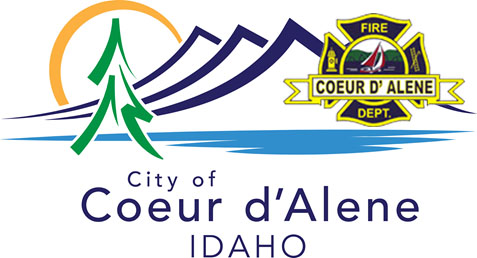Why do fire trucks respond to medical emergencies?

Q. Why do fire trucks respond to medical emergencies?
A. Have you called 9-1-1 and noticed that it seemed like the entire fire department was on your doorstep by the time you hung up the phone? Or maybe you were distracted from watching your 10:00 news by the purring of 1, 2 or even 3 fire apparatus parked on your street while we helped one of your neighbors. Hopefully the following information will help you answer that nagging question: Why do so many firefighters and/or apparatus respond to what seem to be minor incidents? For the last fifteen years, the Coeur d'Alene Fire Department, as well as other neighboring agencies, has been staffing ambulances with firefighters, EMS techs, and paramedics and sending them to all medical calls. These cross-trained providers who take care of a medical patient may turn around and fight a structure fire or tend to an automobile accident before getting the chance to return to the station and regroup. This is one reason the fire apparatus, ambulances, and paramedic vehicles respond to virtually every call together. The types of fire trucks and apparatus will vary with the location of the station in relation to the emergency. For example, if you live downtown, there's a good chance our 100-foot ladder truck will respond to the emergency. Our crews are cross-trained to perform in many capacities and can handle virtually any emergency. The Coeur d'Alene Fire Department has a long-standing tradition of being very proactive with regard to its response to emergency situations. The old saying, "It's better to be safe than sorry!" systematically applies to saving lives and protecting the property of our city of excellence. The department's goal is to strategically plan future fire stations so that emergency responders can respond from these stations to emergency calls in the city within four minutes. Sometimes it is very difficult for the responding firefighters to get a good grasp of what might be needed in that short amount of time. Actually, when you take into account the initial 9-1-1 call, which takes one minute, the personnel and apparatus taking one minute to get prepared and out of the station, and the two minutes it takes to get to the scene, there is precious little time for the firefighters and dispatchers to get a clear picture of the exact nature of the situation and condition of the patient. By sending the closest unit and enough units to provide the number of personnel needed to handle almost any medical call we encounter, we're spared having to send for extra men and equipment. Many calls require 5-to-6 personnel to get the job done in the efficient and professional manner our customers have come to expect. Patients may require several firefighters to safely move them from a precarious position and lift them onto a gurney. Meanwhile, patients need to be assessed, information documented, and often times, lifesaving protocols that take many personnel are being performed. For example, 5-to-6 skilled people are needed to revive someone from a cardiac arrest. The next time you see a couple of fire or EMS vehicles parked on your street, or if you have to call 9-1-1 and are surprised by the number of caregivers arriving at your door, remember that your department is just being prepared and providing the best medical and fire protection available.








